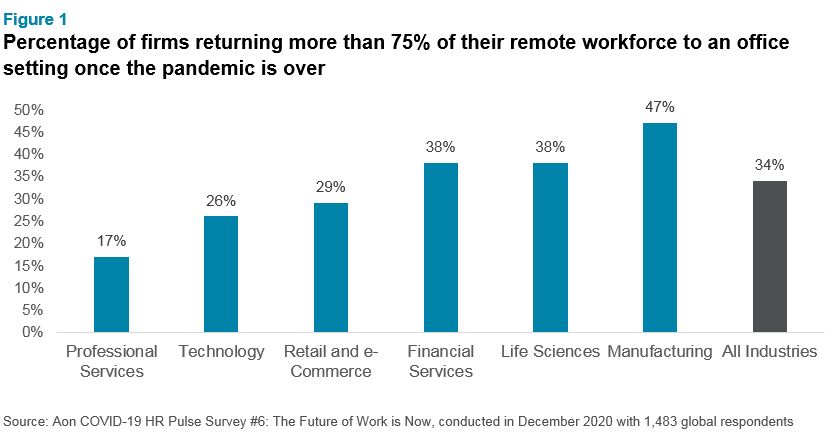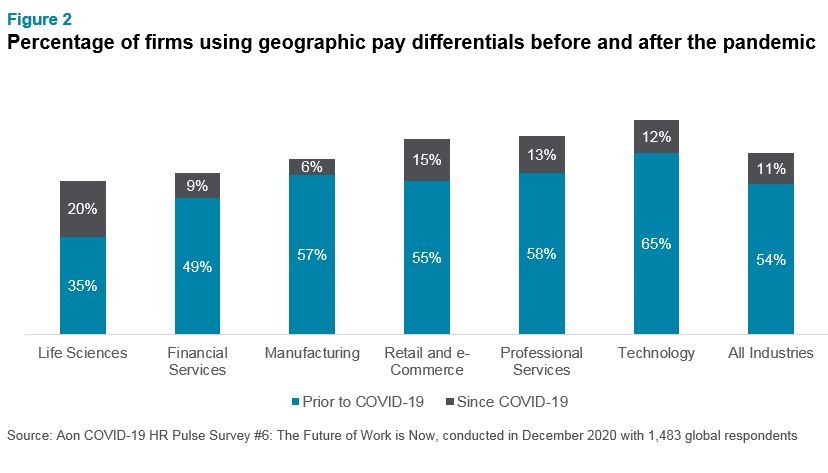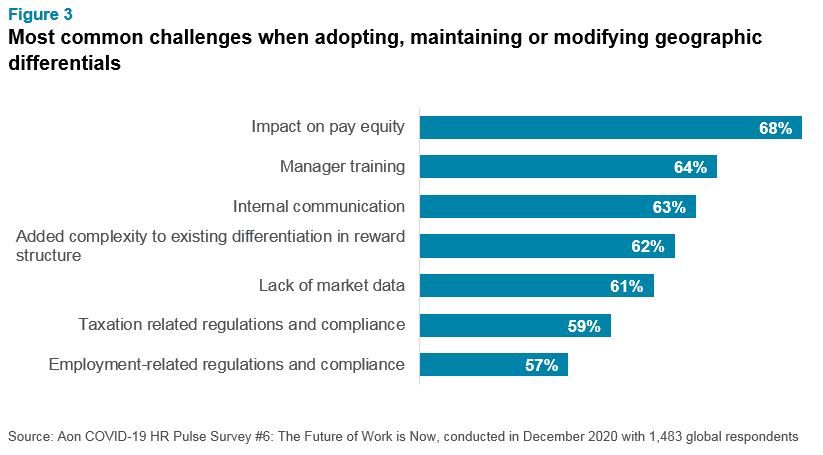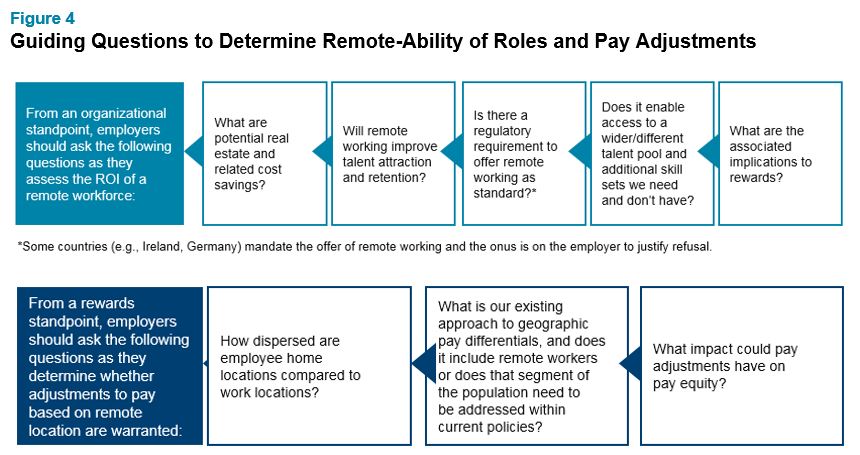As more companies consider extending remote working, they are thinking through the roles primed for virtual work and whether location-based pay adjustments are needed. Future working models will look different across industries, with technology and professional services firms moving faster. Here is a comparative analysis and framework for remote working considerations across industries.
Organizations will be working differently as we emerge from the pandemic. Remote or flexible working models are increasingly common, and the approach to rewards will need to accommodate employees with very different working arrangements.
Only about one-third of the nearly 1,500 global companies we surveyed in December 2020 plan to return a significant majority (75% or more) of their remote workers back to the office when the pandemic is over. The remaining majority will keep a portion or all of employees remote or in a hybrid working model. This virtual shift is led by professional services and technology firms: Only 17% of professional services firms and 26% of technology companies are planning to return the majority of their currently remote employees (see Figure 1 for a sector-specific breakdown).Other sectors, such as life sciences and manufacturing, are seeing lower rates of remote working due to many of the roles needing to be on-site. Yet, remote working is still much higher across all sectors than it was before the pandemic.
The decision for which roles can be done remotely and how to manage pay for employees working from home is still very much in debate. Within the technology sector there are some visible examples of diverging approaches. Facebook introduced permanent remote working in the early days of the pandemic back in May 2020 and allowed employees to choose their remote working location. While Facebook said they would adjust compensation based on the employee’s new location, this was not part of Spotify’s new “Work from Anywhere” program. In its new program, Spotify introduced two new choices: “Work Mode” that consists of working from home, the office or a mix; and “Location Mode” that allows working outside of the firm’s office locations, including internationally, and provides options for co-working space membership if employees wish to work in an office setting.
As companies rethink the future of where and how their people will work, more than half of the 1,500 respondents to our pulse survey in December said they completed a formal assessment of the job or role types that can be performed remotely on a permanent basis. Following this assessment, two-thirds of respondents permanently expanded the population of employees who qualify to work remotely, while 43% have already expanded the scope of remote working and 24% are actively considering it.

If there is one single phenomenon observed across all sectors, it is the increasing significance of location in rewards strategy. Across all industries it is becoming more common to adopt geographic pay differentials. Before the pandemic, 54% of our survey respondents said they differentiated pay by location; an additional 11% have adopted or are considering adopting location-based pay differentials since the onset of COVID-19.

While geographic pay differentials are common, not all firms are utilizing them for their remote employees. Figure 3 shows the most common concerns companies are expressing when considering adopting location-based pay for remote employees.

With remote working here to stay, rewards leaders will be expected to form a view on whether to apply geographic pay differentials for their remote workforce, particularly in situations where employees move from their home base to a new location. It is not an easy task and we observe different emerging schools of thought.
Key Considerations for Remote-Ability and Pay Adjustments
We have developed a decision model to support reward leaders with these decisions about pay models for the future. The framework can help with making decisions on which jobs (as well as the individuals in those jobs) will be successful in a remote environment; approaches and implications of geographical pay; and adjustments to rewards structures. Using these questions alongside our extensive data on geographic pay differentials, including our 2020 European Geographic Base Salary Differential Reports, will help leaders develop a detailed plan for the location strategy and remote-ability of their workforce.

To learn more about how we are approaching location strategy and remote working with our clients, download our new whitepaper: Defining How and Where People Should Work in the Future.